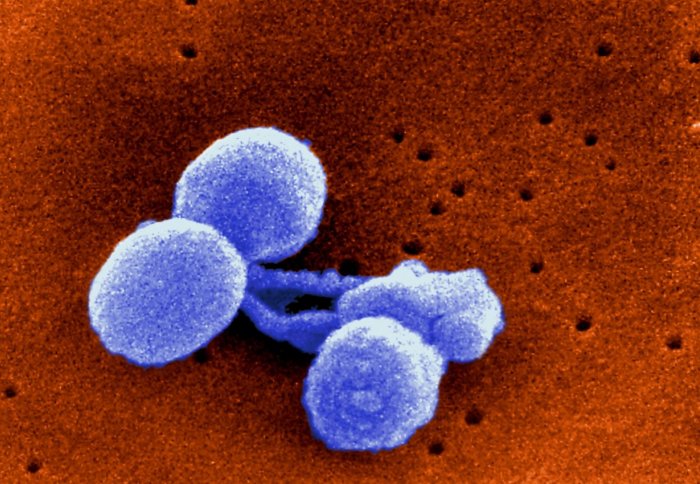Bacterial population struggles can affect the potential of vaccines
by Ryan O'Hare

pneumococcal bacteria
Scientists have shown how vaccinating against a common cause of pneumonia leads to lethal strains of bacteria being replaced by less harmful strains.
The study, published this month in Nature Ecology & Evolution, provides a clearer picture of the complex population structures of bacteria and how different strains struggle to establish themselves.
According to the researchers, the findings could help to optimise new vaccines by predicting how they will change bacterial populations in the longer term, based on how common certain genes are among the bugs.
A better understanding of what makes some bacterial species so complex is critical to making better decisions about how to minimise the disease they cause
– Dr Nick Croucher
School of Public Health
Streptococcus pneumoniae, or the ‘pneumococcus’, are the most common bacterial cause of pneumonia, killing hundreds of thousands of children under the age of five each year. The microbes can also cause meningitis and blood poisoning in vulnerable patients.
To combat the threat, a number of vaccines have been developed over the last decade. These interventions target the most deadly strains, enabling the body’s defences to recognise these bugs and wipe them out before they can get a foot hold and leading to a drop in childhood deaths.
In the latest study, researchers carried out a large-scale genetic analysis and modelling of pneumococcal bacteria. The findings reveal how the recently-introduced vaccines have killed off many strains from the species, enabling other less common strains to take their place.
Population shift
An international team, led by Imperial College London, used three large collections of genomes, sequenced at the Wellcome Trust Sanger Institute, to follow the effects of vaccination in the UK, USA, and Netherlands.
Many strains of pneumococci were eliminated in the years following vaccination. However, follow up studies which involved taking swabs from inside children's noses – where the bacteria can live harmlessly – show that the species as a whole did not become any less common.
Analysis revealed the make-up of pneumococcal populations shifted, with the vaccine-targeted strains disappearing and less common strains – which caused less disease in children – stepping in to take their place.
The team focused on the frequency of genes throughout the populations – how common individual genes were across all strains. They found that the gene frequencies were stable in all pneumococcus populations, including before and after vaccination programmes. Computer simulations showed this was unlikely to have happened by chance, pointing to a selective force at play.
“Because a vaccine was introduced that targeted only a subset of strains, this altered the frequencies of many genes,” explained Dr Croucher, from Imperial’s School of Public Health and senior author on the paper. “But we then saw them ‘bounce back’ closer to their original frequencies.”
This stability is evidence that populations had been influenced by a particular type of selection, called negative frequency-dependent selection (NFDS), adds Dr Croucher.
Rare genes flourish
In this scenario, certain genes can provide an advantage when they are less common, such as after a decrease in numbers. This means those individuals which have these rarer genes are at a greater advantage, and so are more likely to survive and reproduce. The rare genes spread quickly through the population and gradually become more common.
Testing this idea was made possible by advances in computational techniques. “Our recent algorithmic breakthrough makes model estimation up to ten thousand times faster than with previous state-of-the-art methods” said Jukka Corander, a professor at Oslo and Helsinki universities and honorary faculty at the Wellcome Trust Sanger Institute, and lead author on the study.
The team believes that this model of the ebb and flow of genes helps to explain why some bacteria have such complex population structures, making them difficult to eradicate through vaccination.
They add that as this ‘genomic surveillance’ approach becomes more common, it will enable researchers to better understand how bacterial populations react to vaccines. It could also lead to the design of more efficient vaccination programmes to tackle the most harmful strains, reducing the death toll around the world from disease.
Dr Croucher added: “A better understanding of what makes some bacterial species so complex is critical to making better decisions about how to minimise the disease they cause.”
-
‘Frequency-dependent selection in vaccine-associated pneumococcal population dynamics’ is published in Nature Ecology & Evolution.
Image: Dr. Richard Facklam, USCDCP
Article text (excluding photos or graphics) © Imperial College London.
Photos and graphics subject to third party copyright used with permission or © Imperial College London.
Reporter
Ryan O'Hare
Communications Division